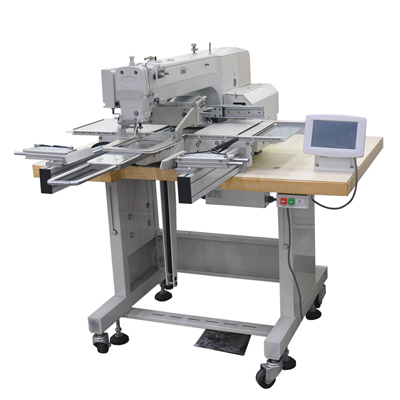With the increasing global focus on sustainable development, environmental protection and energy conservation have become important issues that cannot be ignored in all industries. In the apparel manufacturing sector, especially in the production of denim, traditional sewing machines consume a lot of energy, leading to carbon emissions and waste of resources. To address these challenges, Computerized Jeans Sewing Machine (CJSM) has become a green innovation in the industry with its excellent energy efficiency and sustainability.

1. Increased Energy Efficiency
Traditional mechanical sewing machines require constant power consumption to keep them running, especially when working with heavy fabrics such as denim. Computerized Jeans Sewing Machines, on the other hand, significantly reduce energy consumption through a series of intelligent designs.
First, these machines are equipped with energy efficient motors that dynamically adjust their energy output according to the workload. When full speed operation is not required, the machine can reduce its speed to minimize unnecessary energy consumption. In addition, many advanced computerized sewing machines are equipped with an automatic standby function, which automatically enters a low-power mode when the machine is not operated for a long period of time, which not only reduces the waste of energy, but also prolongs the service life of the equipment.
Secondly, the precise control system of Computerized Sewing Machines makes the sewing process smoother and reduces unnecessary repetitive operations and error corrections. This high-precision operation reduces resource wastage, such as excessive power consumption or extra use of raw materials, thus improving overall productivity and energy utilization.
2. Reduced Carbon Footprint
The energy efficiency benefits of the Computerized Jeans Sewing Machine are directly reflected in a reduced carbon footprint. While the production process of jeans often requires long sewing sessions that consume large amounts of electricity, Computerized Sewing Machines dramatically reduce power consumption by optimizing the operating process.
In addition, many modern sewing machine manufacturers focus on using environmentally friendly materials and energy efficient technologies when designing and producing these machines. This not only reduces the environmental impact of the machine's manufacturing process, but also ensures its green credentials throughout its lifecycle. For example, some manufacturers have begun to use recyclable materials for sewing machine housings and components to further reduce environmental pollution.
3. Extend equipment life and reduce resource waste
Sustainability is not only reflected in the production process, but also in the lifespan of the equipment; Computerized Jeans Sewing Machine ensures that the machine can run stably for a long time under high-intensity working environment through high-quality materials and precise design, reducing the frequency of equipment breakdown and replacement.
Compared with traditional mechanical sewing machines, the automatic maintenance reminder function of Computerized Jeans Sewing Machine helps users to carry out timely equipment maintenance to prevent premature wear and tear and breakdown. Through this proactive maintenance mode, the lifespan of the equipment is greatly extended, thus reducing the need for new equipment and further minimizing waste of resources.
4. Promoting sustainable fashion production
As the fashion industry transitions to sustainability, the Computerized Jeans Sewing Machine plays an important role in this shift. It not only reduces energy consumption, but also reduces resource dependency by optimizing production processes. For example, the automatic thread trimming function of the sewing machine is able to accurately cut the thread at the end of each sewing session, avoiding wastage of thread. The automated programming function reduces human error, which in turn reduces material loss and scrap.
In the production of denim, fabrics are often used in large quantities, and through precise sewing and cutting, it is possible to maximize the use of materials and reduce unnecessary waste. This is a great advantage for advocates of eco-friendly fashion and is in line with today's market's pursuit of sustainable, zero-waste production methods.
5. Green Production and Social Responsibility
In addition to technological advancements, companies that choose to use Computerized Jeans Sewing Machine are also practicing greater social responsibility. By introducing energy-saving equipment, these companies not only reduce the negative impact on the environment during the production process, but also create a greener working environment for their employees. The use of such efficient, low-noise equipment helps to improve conditions in the workplace and enhances the work experience of employees.
These initiatives create an image of green production for the company in the marketplace, while also enhancing its sense of social responsibility. This is not only a contribution to the environment, but also a positive response to consumer demand for green consumption.
The energy efficiency and sustainability of the Computerized Jeans Sewing Machine brings significant environmental benefits to the denim industry. Through intelligent and automated design, it reduces power consumption, optimizes the production process, and reduces waste of resources. In the future, as more companies make the green transition, the Computerized Jeans Sewing Machine will continue to play an important role in contributing to the sustainable development of the global fashion industry.




